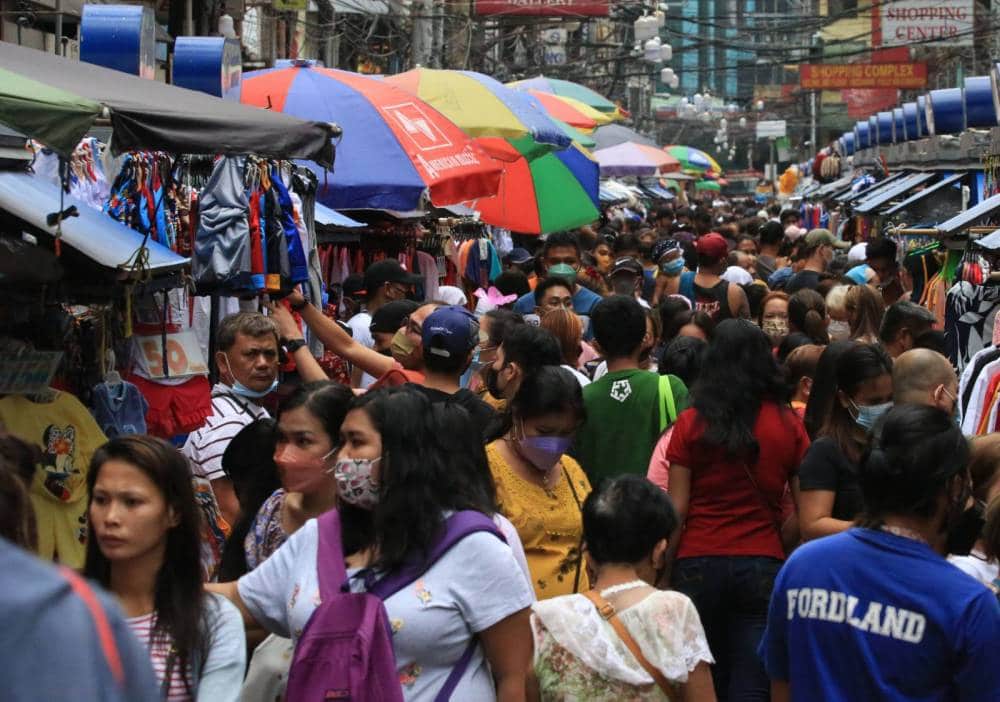Like many countries, the Philippines was not immune to the initial shockwaves of the Covid-19 pandemic.
To curb the rising number of infections, one of the Philippine government's first responses was to implement lockdowns, later categorized into "alert levels."

Four years ago, on March 15, 2020, Metro Manila was first placed under an enhanced community quarantine (ECQ).
On March 17, the strictest quarantine level was implemented in Luzon. Several areas of the country were then subjected to varying degrees of alert levels as the nation continued to grapple with the impacts of the pandemic.
In May 2023, the World Health Organization (WHO) formally declared that Covid-19 was "no longer a global health emergency."
Two months later, in July 2023, President Ferdinand R. Marcos Jr. also lifted the "state of public health emergency" declared due to Covid-19.

Stronger and better-prepared health system
While the pandemic exposed weaknesses in the country's healthcare system, the Department of Health (DOH) believed it also paved the way for transformative improvements in healthcare response.
"Moving forward, we have learned our lessons, and we now know better," said Health Secretary Teodoro Herbosa in a statement issued on March 14.
DOH Officer-in-Charge Assistant Secretary and Deputy Spokesperson Dr. Albert Domingo also shared significant details about the country's Covid-19 journey during an interview on March 14.
Domingo noted that four years since the Philippines declared the Covid-19 pandemic in 2020, the average daily nationwide new cases now hover around only 25 to 30.

"In terms of health utilization, our number of occupied beds in percentage," Domingo said. "Whereas before, the highest reached 70 to 74 percent, now it's down to only 11 to 15 percent," he added.
Domingo furthered that the "denominator" of the number of Covid beds has significantly decreased. "Before, there were around 10,000 beds nationwide, but now only about 1,000 beds remain," he said.
In response to inquiries about the Philippines' readiness for future pandemics, Domingo said: "We are very much prepared."
He noted the transformation of previous temporary treatment and monitoring facilities (TTMF) into safe Covid facilities, which commenced on March 6.
Domingo also announced the conversion of the former TTMF into the New Urgent Care and Ambulatory Service Center (BUCAS) in Sto. Tomas, Pampanga, stated that these centers can serve as isolation facilities if needed during another pandemic.
Covid-19 status nationwide
As the Philippines emerged from the grips of the pandemic, the DOH highlighted a sense of cautious optimism.
The DOH emphasized that at the peak of the Covid-19 pandemic in the Philippines, there were as many as 34,903 new cases per day on average in January 2022.
For healthcare utilization, the highest occupancy of total Covid-19 beds was at 71 percent and ICU beds at 74 percent in September 2021, with many more beds dedicated then, which were 35,499 in total, than now at 11,842.
However, as of the latest data on March 14th, the DOH reported only 251 new Covid-19 cases in the country.
Citing data from Feb. 27 to March 4, DOH records showed that the daily average of Covid-19 cases in the country is now 36, which is 27 percent lower than the previous week's average from Feb. 20 to 26.
The DOH highlighted that of the newly reported Covid-19 cases, only three patients were in "severe or critical condition."
Meanwhile, DOH also noted that there were seven deaths. Of these, five occurred from Feb. 20 to March 4.
Moreover, DOH records also showed that as of March 14, there were 115, or 10 percent, severe and critical patients admitted to hospitals due to Covid-19.
DOH said 115, or 10 percent, of the 1,185 Intensive Care Unit (ICU) beds allocated for Covid-19 patients were occupied, while 1,119, or 11 percent, of the 10,097 non-ICU Covid-19 beds were also in use.
Regarding the vaccination status, Domingo emphasized the importance of receiving basic vaccinations for previous strains.
DOH also credits this low severity and fatality to the protection given by the health agency's high vaccination coverage.
"The coverage is high, and for additional variants, we have to be vaccinated if an individual is considered high-risk," he said.
Domingo noted that there will be more vaccines to come. "Covax may have disappeared, but the Global Alliance for Vaccines has taken its place. It just changed its name, but it's the same," he added.
Despite the unprecedented challenges, the Philippines' journey through the Covid-19 pandemic, as reflected in the current changes, can be described as a story of resilience, adaptability, and collective determination."